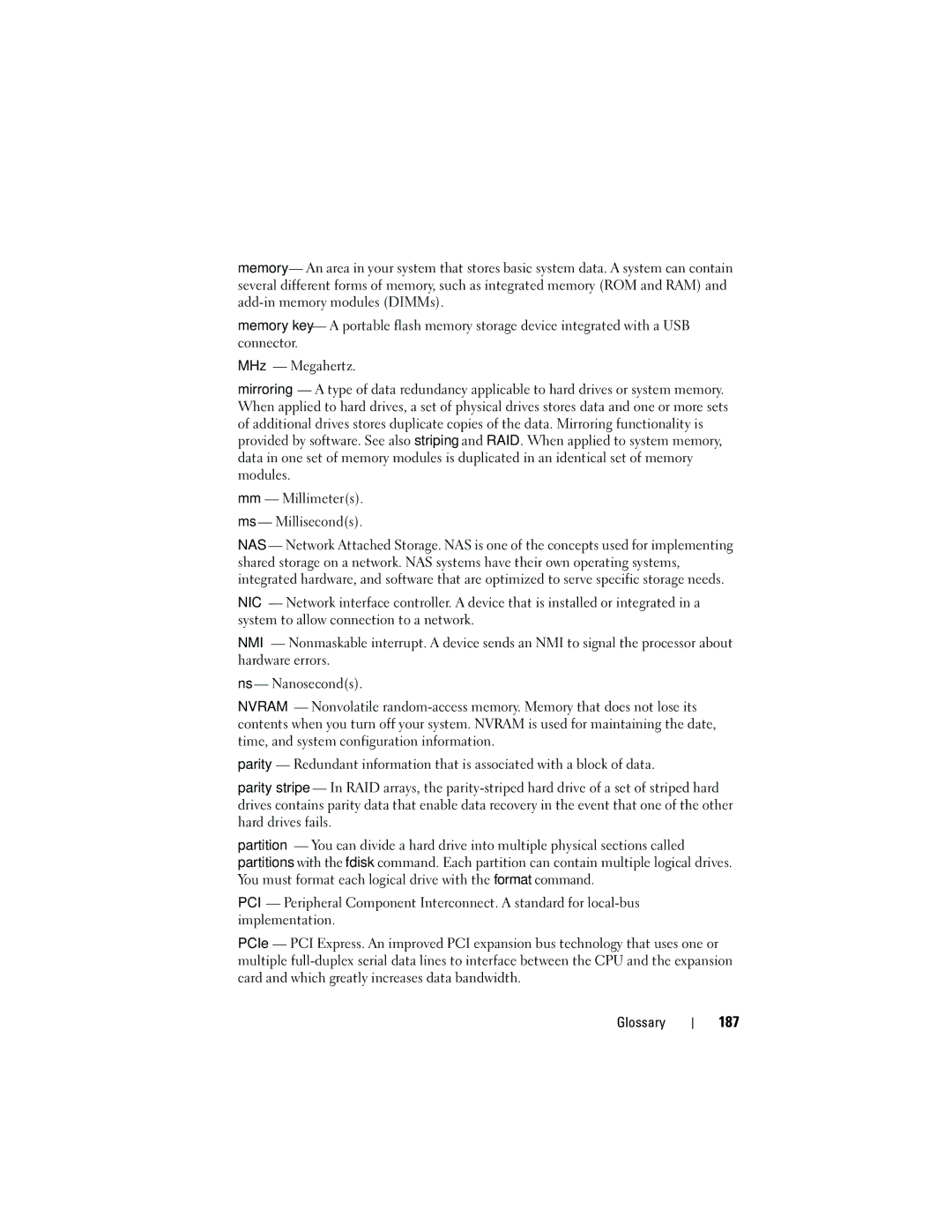memory — An area in your system that stores basic system data. A system can contain several different forms of memory, such as integrated memory (ROM and RAM) and
memory key — A portable flash memory storage device integrated with a USB connector.
MHz — Megahertz.
mirroring — A type of data redundancy applicable to hard drives or system memory. When applied to hard drives, a set of physical drives stores data and one or more sets of additional drives stores duplicate copies of the data. Mirroring functionality is provided by software. See also striping and RAID. When applied to system memory, data in one set of memory modules is duplicated in an identical set of memory modules.
mm— Millimeter(s).
ms — Millisecond(s).
NAS — Network Attached Storage. NAS is one of the concepts used for implementing shared storage on a network. NAS systems have their own operating systems, integrated hardware, and software that are optimized to serve specific storage needs.
NIC — Network interface controller. A device that is installed or integrated in a system to allow connection to a network.
NMI — Nonmaskable interrupt. A device sends an NMI to signal the processor about hardware errors.
ns — Nanosecond(s).
NVRAM — Nonvolatile
parity — Redundant information that is associated with a block of data.
parity stripe — In RAID arrays, the
partition — You can divide a hard drive into multiple physical sections called partitions with the fdisk command. Each partition can contain multiple logical drives. You must format each logical drive with the format command.
PCI — Peripheral Component Interconnect. A standard for
PCIe — PCI Express. An improved PCI expansion bus technology that uses one or multiple
